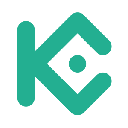
1 Level
154 Review
169 Karma
Review on Paymon by Mr Benji

Good idea but can't deliever?
1. Paymon Blockchain = DAG The project, which consists of Paymon tokens and the Paymon coin, is decentralized in the same way as most cryptocurrencies. Like IOTA, also based on the DAG system, which will probably replace the outdated blockchain in the future. Transactions based on DAG are confirmed by nodes, but there will be a limited number of machines with high computing power, but each user in the network will be perceived as a node. The whole Paymon ecosystem will be full of nodes that can both generate transactions but also take an active part in the confirmation process. The main idea of Hive technology is as follows - when a new transaction occurs, the node must approve (or try to approve) the two previous transactions. In order for the transaction confirmation process to proceed as quickly as possible, nodes will create groups (so-called pools). Ultimately, each of these groups will confirm the transaction - in order to ensure the security of the Paymon network, all users will work on transaction processing. Hive technology uses a system called Proof-of-me (POM), which is based on Proof-of-work (POW) but is extended by a kind of rating system. Such a precautionary principle assumes that the user who wants to integrate with the system must first approve certain transactions
2. No fees + high transaction speed Due to the use of DAG in Paymon, there are no miners whose services (confirmation of individual blocks of transactions) were necessary in Blockchain 1.0. This gives the system three important benefits. First of all, the DAG does not specify the maximum number of transactions per second - the limit is theoretically not present. Bitcoin and its Proof-of-work allow you to confirm up to 7 transactions per second. At Ethereum, you can talk about 13-15 transactions per second. EOS, also based on modified blockchain technology, has the potential to confirm a maximum of 100,000 transactions per second. Such amount seems to be significant but in some cases it may be insufficient. In the case of Hive technology, the number of transactions per second is by definition unlimited - the more users the network is more stable and the transactions are faster. IOTA offers similar possibilities. The second advantage is that the transaction speed will increase even without miners. For comparison - in normal conditions, the confirmation of a Bitcoin transaction takes about 30 minutes, in the context of Ethereum we talk about 15 seconds (a maximum of a few minutes). In the case of Paymon Coin, transactions will be confirmed immediately. The third advantage is that the Paymon system will avoid transaction fees. In February 2017, when a large number of people at the same time actively used Bitcoin, the average transaction processing cost amounted to as much as USD 55. This problem occurs to this day, although there are cryptocurrencies (eg EOS or IOTA) that try to provide the user with the comfort of free transactions. The same idea guides the creators of Paymon.
3. Smart kontrakty Oczywistym nadużyciem byłoby twierdzenie, że Paymon iesie ze sobą innowację w postaci smart kontraktów. Ich geneza sięga bowiem początków Ethereum. Smart kontrakty umożliwiają transakcje pomiędzy dwoma użytkownikami na z góry znanych zasadach, które obie strony muszą zaakceptować. Jeżeli jedna ze stron nie chce potwierdzić transakcji, smart contract nie zostanie zrealizowany. Dla porównania – IOTA nie ma wbudowanych smart kontraktów. Teoria systemu DAG wyjaśnia, dlaczego nie można zintegrować smart kontraktów z tym systemem. W blockchainie Ethereum wszystkie transakcje zmieniają się w podanej kolejności. W systemie IOTA (Tangle) nie jest możliwe określenie kolejności. Dzieje się tak, ponieważ system DAG ma różne rozmiary i nie spotyka się w jednym punkcie – ogniwie. Twórcy oprogramowania Hive pracują nad rozwiązaniem tego problemu. 4. Quantum – Resistant Algoritmus Odporność na ataki ze strony maszyn kwantowych to kolejny powód, dla którego Paymon Coin może odnieść sukces. Hive będzie używać algorytmów, których nie mogą zakłócić komputery kwantowe. W obecnych czasach, ze względu na brak powszechnego użycia komputerów kwantowych, problem ten nie wydaje się być pierwszoplanowym. Niemniej wszystko wskazuje na to, że kwestia ta stanie się paląca w przeciągu następnych 5-10 lat. IOTA była jedną z pierwszych technologii, która zdecydowała się na użycie algorytmu typu quantum-resistant. Paymon czerpiąc z dorobku twóców Tangle wysuwa się o krok dalej. Algorytmy IOTA nie są zoptymalizowane a ponadto wymagają wygenerowania większego ruchu w sieci (w porównaniu do Paymon) – dla przykładu klucze Paymon będą miały rozmiar 256 bitów, podczas gdy IOTA potrzebuje do 7000 bitów. 5. Język programowania – Rust Kod źródłowy technologii Hive zostanie napisany w języku programowania Rust. Dla usystematyzowania wiedzy – Bitcoin został napisany w Forth, Ethereum w Solidity, EOS stworzono w oparciu o Web Assembly, IOTA jest napisana w JavaScript/Python/C#/Java/Go. Rust jest najbezpieczniejszym i najbardziej zaawansowanym językiem ze wszystkich. Jest bezpieczniejszy, szybszy i bardziej wyrafinowany niż wszystkie inne języki.
3. Smart contracts It would be obviously abusive to say that Paymon is with him an innovation in the form of smart contracts. Their origins date back to the beginnings of Ethereum. Smart contracts allow transactions between two users on pre-established rules that both parties must accept. If one of the parties does not want to confirm the transaction, the smart contract will not be executed. For comparison - IOTA does not have smart contracts embedded. The DAG theory explains why you can not integrate smart contracts with this system. In the Ethereum blockchain all transactions change in the order given. In the IOTA (Tangle) system, it is not possible to specify the order. This is because the DAG system has different sizes and does not meet at one point - the link. The developers of Hive software are working on solving this problem.
4. Quantum - Resistant Algoritmus The resistance to attacks from quantum machines is another reason why Paymon Coin can succeed. Hive will use algorithms that can not be disturbed by quantum computers. Nowadays, due to the lack of widespread use of quantum computers, this problem does not seem to be a priority. However, everything seems to indicate that this issue will become urgent within the next 5-10 years. IOTA was one of the first technologies that decided to use the quantum-resistant algorithm. Paymon, drawing from the achievements of Tangle's creators, goes a step further. IOTA's algorithms are not optimized and they also require more network traffic (compared to Paymon) - for example, Paymon keys will have a size of 256 bits, while IOTA needs up to 7,000 bits.
5. Programming language - Rust The source code of the Hive technology will be written in the Rust programming language. To systematize knowledge - Bitcoin was written in Forth, Ethereum in Solidity, EOS was created based on Web Assembly, IOTA is written in JavaScript / Python / C # / Java / Go. Rust is the safest and most advanced language of all. It is safer, faster and more sophisticated than all other languages.
Pros
- DAG
- nodes
- Quantum - Resistant Algoritmus
Cons
- low volume
- no volume











